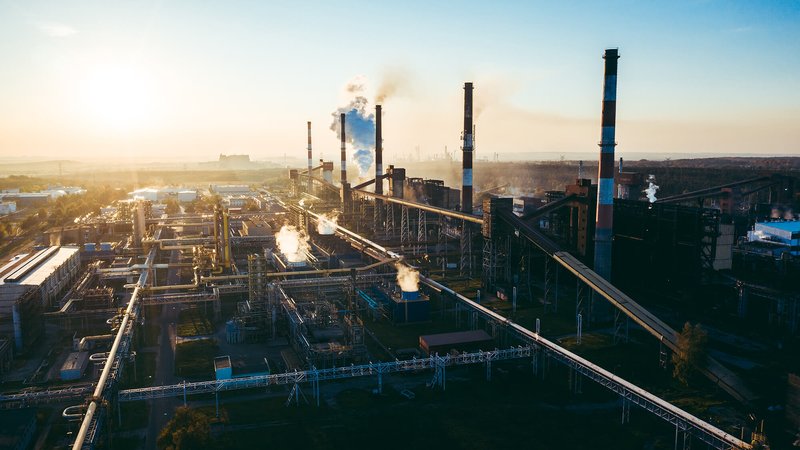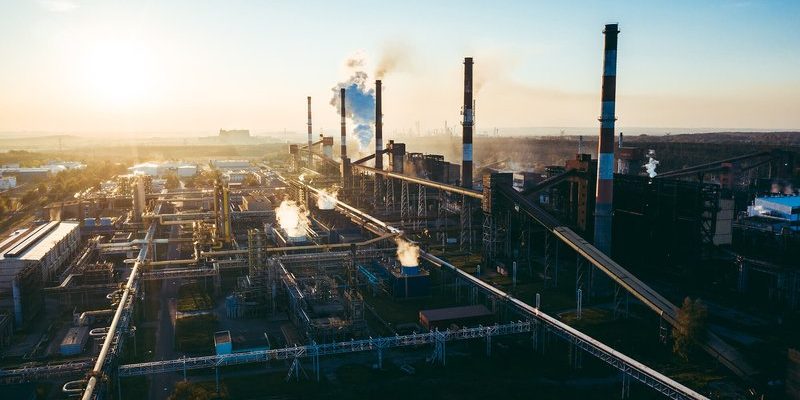
Let me explain: inside nearly every device are delicate parts that need to stay reasonably clean to function right. But when you’ve got pollutants like dust, chemical fumes, or even fine metal particles floating around, it’s like your hardware is running a marathon while wearing a dust mask. You might not see the damage at first, but give it a few months—or years, in tough industrial environments—and you’ll notice malfunctions, weird glitches, or that unmistakable “something’s not right” feeling.
So, what do you do when your remote doesn’t sync, your control board won’t reset, or your favorite gadgets stop responding? Honestly, tackling damage from airborne pollutants can seem tricky, but with a careful approach and a little patience, you can give your hardware a second life. Let’s walk through how this pollution sneaks in, what it does, and how to repair (or prevent) the most common problems—whether you’re working with a universal remote, brand-specific model, or any piece of sensitive tech.
How Airborne Pollutants Damage Hardware in Industrial Zones
The first thing to understand is *how* this kind of damage happens. Industrial areas produce a cocktail of airborne pollutants: everything from regular old dust to corrosive chemical vapors, oil mist, and stray metal filings. These particles are tiny—way smaller than anything you could easily see—but as they settle on your device, they build up, layer by layer.
Over time, these pollutants form a film on the circuit boards and connectors inside your hardware. This film isn’t just “dirt.” Sometimes, it’s slightly conductive, or it absorbs moisture from the air, which can cause shorts, corrosion, and erratic performance. Ever wonder why your remote stops pairing with the TV, or why you need to keep resetting devices? Pollutant buildup is often a hidden culprit—especially where dust and fumes hang in the air all day.
Let’s talk about *where* the damage happens. Most modern electronics—remotes, keypads, control panels—have seals and cases. But no enclosure is perfect. Vents, buttons, battery doors, and even USB ports can all let in microscopic junk. Industrial-strength pollutants are especially good at sneaking through any little gap, working their way onto the code traces and sync contacts inside.
Honestly, some of this sounds like science fiction, but ask anyone who’s serviced hardware in a chemical plant or busy factory: they’ll tell you about green corrosion on battery terminals, sticky keypads, and mysterious “soft” failures that only show up after months of exposure.
Diagnosing Pollutant-Related Hardware Issues
You might be wondering, “How do I know if my hardware trouble is caused by airborne pollutants and not something else?” Here’s the thing: pollutant damage often looks like regular old wear-and-tear—until you pop the case open and see the sticky, dusty, or corroded mess inside.
Watch for these signs:
- Unresponsive controls — no matter how many times you reset or replace the battery, buttons stick or fail to register.
- Glitches when syncing or pairing — intermittent connection problems, dropped signals, or random resets.
- Sporadic performance — the device works fine one day but acts up the next, often after shifts in temperature or humidity.
- Visible gunk — dust buildup around buttons, inside the battery compartment, or even on the circuit board itself.
Let me share a quick example: I once helped a factory supervisor whose universal remote kept dropping connection with their control screens. Turned out, a fine powder (from nearby metal grinding) had settled inside and was quietly shorting out the contacts whenever humidity spiked. Not obvious at first glance, but a classic case of pollutant-induced trouble.
To really diagnose the problem, you’ll likely need to open up the device (carefully, mind you), check for visible contamination, and do some basic troubleshooting—like cleaning contacts and reseating cables. If you’re uncomfortable doing this, a professional repair tech with anti-static tools and experience in polluted environments is a safe bet.
How to Clean and Repair Hardware Damaged by Airborne Pollutants
If you’re ready to roll up your sleeves, here’s how to tackle pollutant-damaged hardware. This works for everything from remotes to industrial control panels. Just be sure to read the manufacturer’s instructions—especially for brand-specific devices like Samsung remotes or Logitech smart hubs.
Step 1: Safety First
Disconnect your device and remove batteries or power sources. This protects you and prevents accidental shorts during cleaning or repair.
Step 2: Open the Case Gently
Use a plastic pry tool or small screwdriver to open the casing. Keep track of tiny screws and don’t force anything—you don’t want to snap any plastic clips.
Step 3: Inspect for Damage
Look for dust buildup, sticky residue (from chemical vapors), greenish corrosion on battery contacts, or anything that looks “off.” Take a moment to snap a picture for reference if you’re new to repairs.
Step 4: Clean Carefully
- Use a soft brush to sweep out dust and debris.
- For sticky spots, use a lint-free cloth dampened (not soaked!) with isopropyl alcohol—nothing stronger, or you could damage components.
- Corroded battery terminals? A pencil eraser or cotton swab with alcohol works wonders for removing light corrosion.
Step 5: Reassemble and Test
Let all cleaned parts dry fully before putting the device back together. Reinstall the battery, reset or resync the device if needed, and see if performance improves.
If you spot major corrosion, broken contacts, or burned-out traces, repairs may need soldering or replacement parts. Sometimes, you’ll have to decide if the hardware is worth repairing—or if a replacement is more cost-effective.
Preventing Future Damage from Airborne Pollutants
Repairing hardware is satisfying, but prevention is even better—especially in industrial settings. Here’s how you can cut down on future problems.
Keep devices sealed: Always make sure battery doors, access panels, and cable ports are closed tightly. If your device has a gasket or seal, check that it isn’t worn out.
Store gear in clean zones: When you’re done using sensitive devices (like a remote that operates pricey machinery), store them in a clean, closed container or a less-exposed room.
Clean regularly: Wipe down cases with a soft, slightly damp cloth to keep dust and grime from working their way inside. Change air filters and keep workspaces as dust-free as possible.
Use protective covers: For industrial remotes and controllers, silicone boots or dedicated covers make a real difference. They may not look glamorous, but they block much of that airborne junk from getting in.
Sometimes, upgrading to industrial-grade hardware is worth it. These models often have better seals, anti-corrosive coatings, or are built for easier cleaning—perfect if you’re constantly battling pollution.
When to Replace Instead of Repair Hardware
Let’s be honest—sometimes, it’s just not worth repairing a device that’s been nuked by years of industrial pollutants. If your remote, panel, or controller is *really* acting up (or if you spot damage that looks terminal), replacement may be the best move.
Watch out for:
- Heavy corrosion on critical parts (like battery terminals or code circuit traces)
- Repeated need for resets, even after a thorough cleaning
- Key features no longer syncing, pairing, or responding as they should—especially if you’ve tried all troubleshooting steps
Most brands—Samsung, Logitech, Universal Electronics, and others—make it pretty easy to swap old units for new. You’ll often get better seals and more modern features, too.
Sometimes, you can trade up to a universal remote that’s easier to clean and more resistant to pollution. Just make sure it’s compatible with your gear, and don’t forget to check for easy pairing or reset instructions.
Comparing Prevention and Repair Strategies
Here’s the thing: you can go all-in on repairs, spend weekends cleaning out remotes and control panels, and still have trouble if your workspace is loaded with airborne pollutants. That’s why a balanced approach—focusing on both repair and prevention—pays off over the long run.
| Prevention | Repair |
|
|
Think of it like keeping your car running in a dusty city—changing the air filter helps, but sometimes you’ve got to rinse off the engine, too.
The Bottom Line: Keeping Your Hardware Alive in Polluted Environments
Honestly, hardware and industrial pollution aren’t an ideal match. But that doesn’t mean you have to accept constant breakdowns. By understanding how airborne pollutants attack your devices, learning a few simple repair techniques, and making prevention a normal part of your routine, you can keep your gear running longer—whether it’s a universal remote, a brand-specific controller, or any other sensitive tech.
If a device starts glitching or refuses to sync, don’t panic. Take your time, open it up, clean what you can, and see if that does the trick. If not, it might be time to upgrade or switch to a more robust model. In the meantime, protecting your electronics from pollution is always easier (and cheaper) than fixing them after the fact.
Staying ahead of airborne pollutant damage is all about vigilance, patience, and a little bit of know-how. With these strategies, your remotes and other hardware can keep working—no matter how dusty or industrial your world gets.
